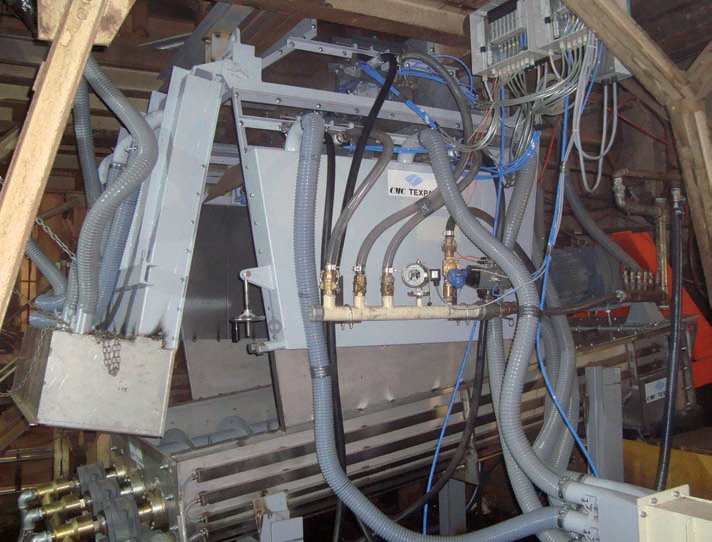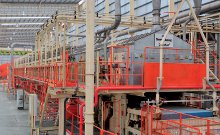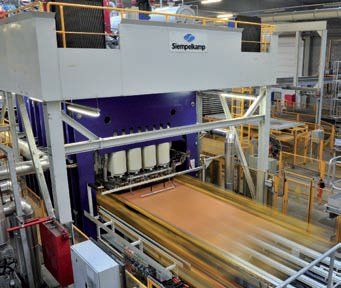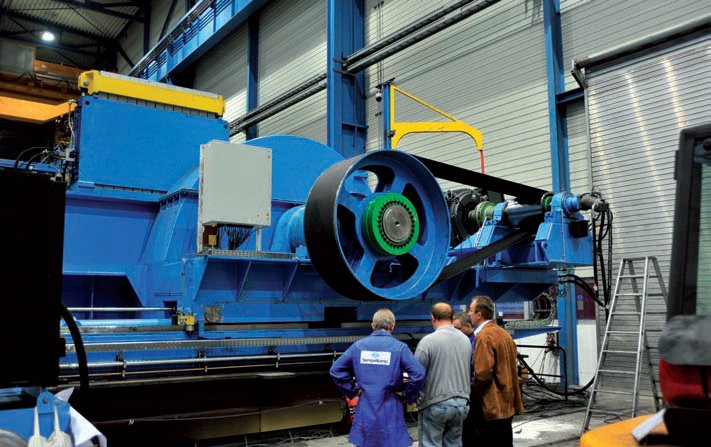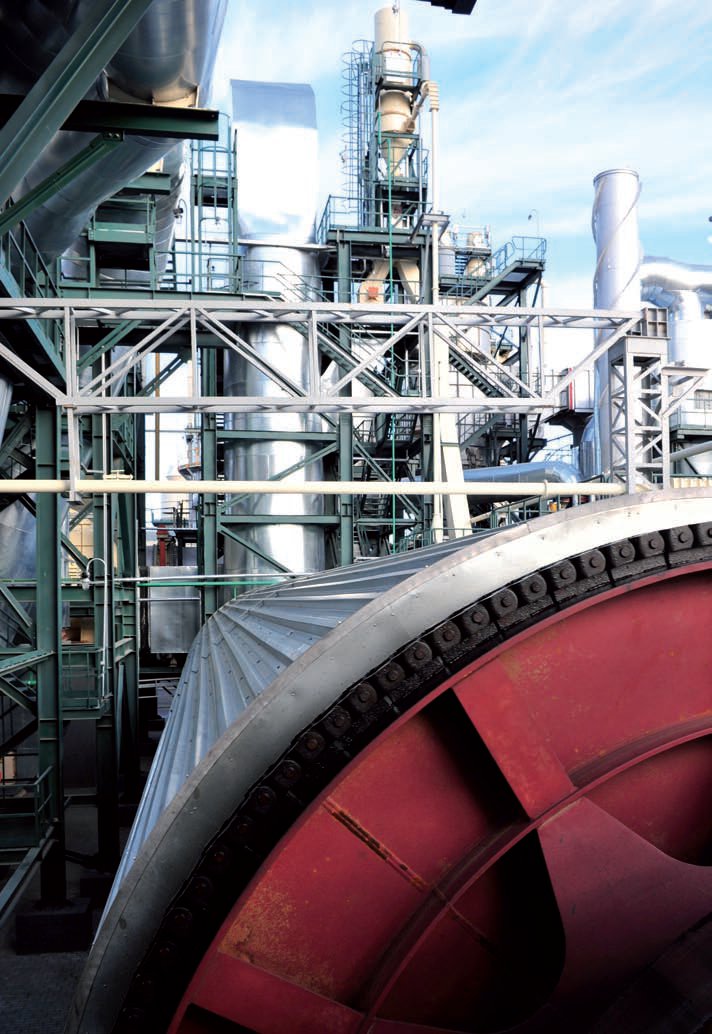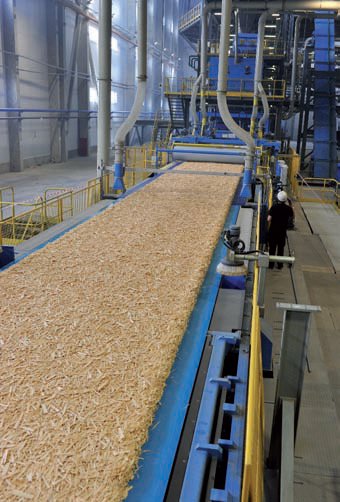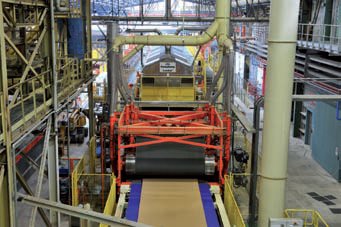The complete package
24 January 2014Siempelkamp has had some good years lately, with many production lines supplied worldwide. The fact that it can offer complete lines from one source has been a major factor in its success. Mike Botting visited its Krefeld headquarters.
Siempelkamp Maschinen-und Anlagenbau GmbH & Co KG, to give it its full name, is of course well-known throughout the panel making world.
Some of the company's products, like the famous ContiRoll continuous press, have been around for many years, while undergoing continuous improvement. Others have come from more recent acquisitions of specialist suppliers, making the Siempelkamp of today a supplier of complete panel production lines.
"We have been very busy over the last two years [since WBPI's last report in issue 6, 2011, p33] and have brought a lot of plants into production," said managing director Heinz Classen, when interviewed at the company's Krefeld HQ, and principle factory, for this report.
"The market has been a bit down in some areas during that time, particularly in China, but in the last few months even that market has been picking up."
Mr Classen pointed out that the company has had a long phase of strong development in the South East Asian market, having supplied new lines to Panel Plus, Metro and Rayong in Thailand, SPF in Indonesia and Dong Wha in both Vietnam and Korea.
The last named was in fact a replacement for an older line which was dismantled in Korea by Siempelkamp engineers and sold to Beypan of Turkey, a furniture maker new to the MDF making business, in Kayseri City Anatolia. That line is due to start up in 2014.
"This is something we do very successfully," said Mr Classen. "We have also bought an old bagasse based line from Panel Plus, reconditioned it, and sold it on to Kronoswiss for one of their projects."
Russia and Belarus have also been a big focus for Siempelkamp. The company has supplied five lines in Belarus, including two particleboard lines: one for Ivatsevichdrev and one for VMG. There is also one particleboard line, one MDF line and one insulation board line currently under construction in that country.
"In Russia, we supplied the country's first OSB line, to DOK Kalevala, and that line is running to full capacity with the customer looking at extending the line to double its current 6-800m3/day capacity," said Mr Classen. "Also in Russia, Russian Laminates' particleboard press in Igorevska in the Smolensk region burnt down and we have replaced it with a Generation 8 ContiRoll, while Uvadrev Holdings has a 1,000m3/day ContiRoll particleboard line currently under construction and due to start production in June 2014."
Again in Russia, but this time for a Turkish owner, a Siempelkamp MDF line at Tatarstan is under construction, with a capacity of 575,000m3/year. In the Krasnodar region, MPC Apsheronsk's MDF line is also under construction and will have the capacity to produce up to 300,000m3/year of MDF on a Generation 8 ContiRoll.
Siempelkamp is also supplying its first project in 15 years to the Peter Kaindl-owned Kronospan company. This will again be a Generation 8 ContiRoll, producing particleboard at the company's Falco plant in Hungary.
South America has been another very active market for Siempelkamp, with a number of recent references.
"At present, we have the Guararapes [Brazil] MDF line, which is scheduled to produce more than 1,000m3/day by September/October 2014 and the Cotopaxi, Ecuador, particleboard line, due to produce 700m3/day by the end of 2014 or early 2015," said Mr Classen. "We also supplied Arauco's particleboard line at Teno in Chile [300,000m3 a year in 2013] and its MDF line at Jaguariaíva in Brazil."
Some lines supplied some time ago to North America are only now coming into production as the housebuilding economy picks up in the US. One such Siempelkamp line is the 70m ContiRoll press supplied to Tolko in Canada five years ago and moth-balled before it had produced a board. It is now undergoing start-up.
Western Europe has not been completely dead for Siempelkamp either. The company started up a high-speed thin board line for Frati's Bipan mill in Bicinicco, Italy, in 2013.
In a slightly different market, Pollmeier of Germany bought a 60m-long, six foot wide, ContiRoll to make laminated veneer lumber (LVL) from beech peeled on a Raute of Finland peeling line.
Generation 8 ContiRoll
"The Generation 8 press was introduced at Ligna 2011, with its new pressure distribution system, which is also available as a retro-fit that can be completed in two weeks," explained Mr Classen.
"This system has given a ten-fold improvement in thickness tolerances and results in the consumption of less glue. For example, Kronoswiss' Menznau plant achieved at least 5-7% glue savings. That mill makes very high-density HDF of more than 1,000kg/m3 and relies heavily on an even pressure distribution in the continuous press. The system also improves the board's surface quality." Mr Classen described the Generation 8 ContiRoll as "an isobaric press done in a mechanical way".
The press has one additional row of hydraulic cylinders in its width, for the whole length of the press, and a modified support structure for the heating platens to provide a more homogeneous support system along the length of the press, he explained.
"We began with thin board presses because thin board always has to be made with a pressure distribution system in the press," said Mr Classen. "There used to be a lot of stainless steel belt damage in thin board presses and the belt would need replacing maybe every year - at a cost of around one million euros.
"Our thin board press has a 3.5mm stainless steel belt and even after five years all our customers are still using the same belt. There was no damage at all."
With this kind of benefit, it wasn't long before people realised the advantage of the pressure distribution system for normal thickness particleboard and MDF too - as well as for OSB production.
"The system has a worldwide patent and it makes a big difference to panel quality and glue consumption," said Mr Classen.
Recent product advances
"We are now looking deeply into all the products of the group and making sure that they are superior [to the competition]," continued Mr Classen.
Siempelkamp has long been well-known for its competence in complete production lines for panel products, but two years ago the company took a major step into a new area when it designed and built, entirely from its own competence, its first OSB stranding machine. This is a giant, with a capacity of up to 45 tonnes/hour from its cutting width of 850cm, employing 56 knives and a motor capacity of 1,250kW.
Mr Classen admits that Siempelkamp has not been recognised as a specialist in gluing in the past, using sub-suppliers for this purpose. However, that is something else which has changed.
"We entered that market with a very definite strategy, " he said. "Usually the glue preparation area is a very dirty part of the factory, so we developed clean, modular kitchens, with a much better appearance and we have now sold over 50 systems.
"Historically, gluing systems have been another area that it is difficult to get right," suggested Mr Classen. "So we developed, together with subsidiary CMC Texpan, the Ecoresinator for particleboard and launched it at Ligna 2013.
"We are currently developing the product with Starwood of Turkey and expect to bring it to the market in early 2014."
The product has some history as the Ecoresinator was first launched in 2011, but for use in MDF production, rather than particleboard.
Equipped with two-component nozzles developed by Schlick, it is claimed to give savings of up to 10% in resin consumption for particleboard. The particles first go through a material flow divider. After this, the nozzles, which are arranged in a staggered manner opposite one another, apply a fine mist of resin to two particle flows, from inside and outside.
By applying the resin uniformly onto the particles, Siempelkamp says that less energy is needed for the subsequent blending process and that the blender runs more slowly. Thus, says the company, the particle structure is maintained and the wear to the machine is minimised, while the cooling energy needed in a traditional system to generate condensation on the machine walls is also reduced, because contact of the resin-coated particles with the walls is avoided in the Ecoresinator system.
"This is an extremely successful product and we have already sold 18 - also for retrofitting," said Mr Classen.
Another new product from Krefeld is the Steam Booster pre-heater for formed mats. This is claimed to give 30% higher outputs in the production of particleboard, MDF and OSB. The company says the mat is pre-heated quickly, simply and cost-effectively.
The first installation of this system took place in November in Belarus and it is expected that it will be brought to the market in early 2014.
Meanwhile, Italian subsidiary CMC Texpan, well known for its forming technology, has launched a new wind-forming concept for surface layer particles in particleboard production.
Instead of the small blowers used to control the air flow which separated the particles in earlier systems, the new former employs perforated plates (diffusers) to give improved air distribution in both vertical and horizontal directions to give a more uniform mat and save materials by using less wood. The system is also said to save energy.
The first installation of this system will be in the 300,000m3/year particleboard line of Uvadrev Holdings OAO in Russia.
The 4ft-wide Dragon Press was launched at Ligna 2013 to offer the full range of ContiRoll technology "at an attractive price".
The press has a flexible infeed and can produce MDF, particleboard or OSB of 2mm to 40mm thickness.
In the field of short-cycle pressing, Siempelkamp launched its brand new KT700 short-cycle press (SCP) at Ligna 2011, but this year offers it with a double-sided 'embossedin- register' process for synchronous pore structures.
High-precision cameras monitor the exact alignment of the decor papers before the charge is loaded into the press, which has parallel guiding of the upper hot platen in interaction with the position-controlled movement of the upper beam, using servo cylinders and corresponding handling equipment.
The future
"There will be big surprises in the ContiRoll coming in 2014," said Mr Classen tantalisingly, while not revealing any details. Siempelkamp will be exhibiting at the Xylexpo fair in Milan in May 2014 and he suggested that the announcement may come then.
There has been some uncertainty about the future of Xylexpo, but Mr Classen has no intention of staying away.
"Siempelkamp will be at Xylexpo 2014. We have a lot of good Italian customers and we have a history of innovation and specialisation in the Italian market, as well as learning a lot from our Italian customers," he said.
"After a hectic expansion phase, we are coming back to look again at all our products and bring them into line," said the managing director.
"After all, we are a technology company which is service-orientated and we offer a lot of improvement packages.
"I have no fear for the future [of this company]; the market is very big."
